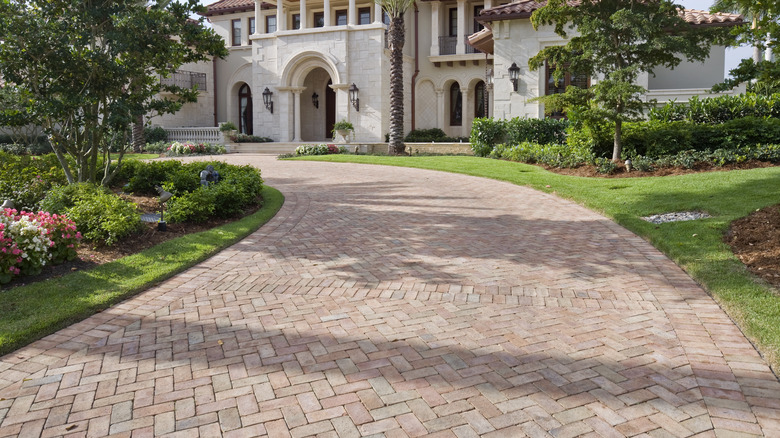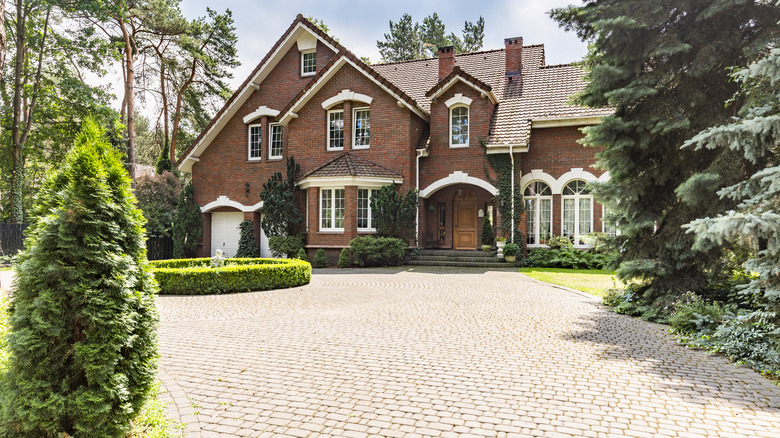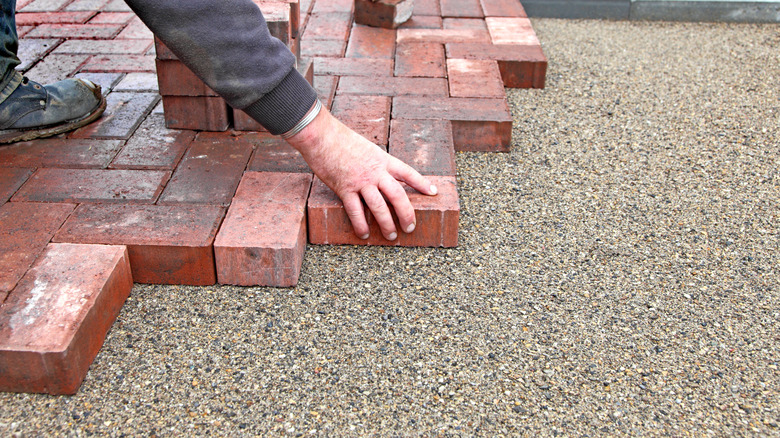What To Know Before Installing A Paver Stone Driveway Yourself
Paver driveways have a lot to offer compared to their concrete and asphalt cousins. The pavers themselves are stronger than either concrete or asphalt, and are usually placed on top of a sturdy, well-compacted base to ensure stability. Apart from their longevity and robustness, paver stones are easy to replace if needed, and their appearance is more visually intriguing than that of soulless, gray or black concrete or asphalt. But these same features that give paver stones an edge over other driveway materials demand a more thought-through design and installation process.
For one, since paver stone driveways stand out visually, you need to carefully design the driveway in a manner that boosts the home's curb appeal instead of spoiling it (we'll show you a few best design practices to keep in mind further down). Also, since pavers are only as effective a surface as the foundation that supports them, you'll have to give due consideration to the driveway base and construct it using well-established guidelines. More on these below.
Paver driveways should be carefully designed
Your driveway is a vital piece in the curb appeal puzzle. Next to your lawn, it's likely the next biggest feature gracing the front of the house. While asphalt driveways don't draw much attention from passersby, their paver stone counterparts are more noticeable since they comprise a patterned design instead of a nondescript monolithic rectangle. This heightened visibility means you should carefully consider how the finished driveway will look, and whether it will complement or detract from the aesthetic of the property.
While visual appeal is highly subjective, there are some best practices you should consider when designing a paver driveway. First, consider its dimensions. On the one hand, for increased functionality, you want the driveway to be as wide as the property and local zoning bylaws allow it. On the other, a driveway that's too wide may steal the spotlight from the house and the lawn, not to mention that excessive width would reduce your green landscaping space. You should find a suitable balance between functional width, its effect on the overall look of the property, and the reduction of your green space. Likewise, be sure to plan for a 15- to 20-foot walkway from the driveway to the front door of the house.
Next, think about the paver stones you'll use; there is a vast array of sizes and colors from which to choose. The field pavers — ones that make up the bulk of the paved surface — should complement the colors of the home's exterior. Meanwhile, the border pavers should match the color of the home's roof. It makes sense to keep the main and border pavers the same size to simplify installation and reduce the need for field-cutting.
Pavers need a strong, stable, and well-draining base
The base serves as the foundation for the pavers. When you step on them, or when your car drives over them, the load passes through the pavers and down to the substrate that supports them. If this base is weak, it will fail after being subjected to vehicular and foot traffic. Conversely, a strong base will keep the pavers even, sturdy, and properly drained when the driveway enters service.
The first factor to consider is drainage. Your driveway should slope away from the house and down to the street. If it doesn't, rainwater will pool on the driveway. And if the grade is sloping toward the home, water will accumulate around your house and expose its foundation or basement to a whole host of water-related problems. As a rule of thumb, a driveway with pavers should slope about 1 inch for every 4 to 8 feet of length.
Apart from drainage, make sure that you're using the correct materials to build a robust base for the pavers. Typically, a patio driveway base is about a foot thick, and comprises ⅝-inch road base gravel. You'll have to compact this base thoroughly either using a tamper tool or a plate compactor before adding a 1-inch sand bedding layer. If you don't mind spending a bit more to end up with a base that drains rainwater more effectively, use a ¾-inch gravel instead, with a bedding of open-graded stone chips instead of sand. You'll be able to lay the pavers on top of the base and bedding of your choice, then secure them along the perimeter using plastic edging held down by foot-long spikes.


